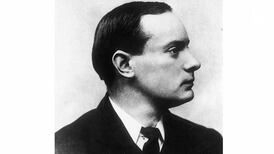Of all the affluent neighbourhoods in San Francisco, none is as well named as Nob Hill. Even in a famously undulating city, it has one of the most precipitous climbs. As for the prefix, that’s an irreverent abbreviation, from the Anglo-Indian “nabob”, for the conspicuously wealthy who by tradition live there.
Until the 1860s, the area was an uninhabitable complex of sand dunes, braved only be a few desperate families in shanty houses. Then the city conquered it with a cable car. Thereafter, it became the favourite location of the rich, vulgar and otherwise, who competed to erect mansions on the summit.
Chief among the mansion builders was a New York Irishman, James Flood. He had started his climb towards Nob Hill as a partner (with compatriot William O’Brien) in a saloon.
But both were good listeners and soon learned enough from the stockbrokers who frequented the premises to join their ranks, riding the market rumours in which so many San Franciscans invested.
Pancake Tuesday: The only recipe you need for making an easy, better batter
My elderly mother’s health is declining quickly. Should we prepare her home for sale?
‘Where I come from, people don’t do medicine. It’s not on your radar’: how a new generation of doctors is being trained
Pancake Tuesday: What’s the history, what does ‘shrove’ mean and what’s the significance for single people?
Their fortunes were made by an actual silver mine in Nevada, the richest lode ever found. In Flood’s case, however, the profits were multiplied by stock manipulation, which left him wealthier than ever after the inevitable crash. High and mighty, he now needed a home to match and built it, with 42 rooms, on Nob Hill.
But as San Francisco chronicler Gary Kamiya has noted in his fine essay on the subject, Hill of Hate, the very elevation of the neighbourhood also made it a metaphor for the gap between the city’s rich and poor:
“On more than one occasion,” he writes, “angry mobs stormed the heights like medieval armies besieging a lofty castle.”
Chief among the stormers was another Irishman, a Cork-born demagogue named Denis Kearney, whose “Workingman’s Party of California”, founded in 1877, briefly threatened a revolution in the city.
Kearney once led 3,000 protesters up Nob Hill, targeting another mansion owner, Charles Crocker, who had made his money on a railroad monopoly.
Typically, the Corkman’s rabble-rousing speech combined praise for “the dignity of labour” with a threat to “kill every wretch that opposes it”. He also promised Crocker “the worst beating […] a man ever had”, before – also typically – marching his men back down again without doing anything that would land him in jail.
The rich exploiters of the poor aside, Kearney’s favourite targets were the Chinese, whose endless supply of cheap labour he came to consider the WPC’s ultimate enemy.
He was soon in the habit of ending all his speeches with the refrain “And whatever happens, the Chinese must go” – a conscious echo, it is said, of Cato the Elder’s closing mantra, urging the destruction of Carthage.
Kearney was powerful enough for a time that Charles Stewart Parnell, on an 1880 visit to the US, courted his support, although without supporting him in turn lest it alienate mainstream American opinion.
The WPC also attracted the attention of Karl Marx, for whom California was an interesting case study, “because nowhere else has the upheaval most shamelessly caused by capitalist concentration taken place with such speed.”
But Kearney’s heyday was a short one. He had already faded from public view by 1886, when Flood completed his mansion – a construction job that benefited from outright slave labour, or at least from the involuntary help of Folsom Prison inmates, who had to quarry blocks of granite for it.
Meanwhile, according to Kamiya, the drama of Nob Hill raised deeper questions for many Americans than mere worker rights: “Just when Jacksonian democracy had established that every man was as good as a king,” they had seen “a new national elite, the plutocracy” emerge.
Worse, the manner of its emerging undermined “their Calvinist admiration for wealth as the external sign of inward rectitude”. Instead, they were now forced to acknowledge “that many of the men who got rich had done so by cheating”.
Maybe some fundamentalists saw the 1906 earthquake, which wiped out most of the mansions on the hill, as belated divine retribution, although as is the way with such disasters, it wreaked havoc on the lowlier quarters too.
Flood was long gone by then anyway. He died in Germany in 1889, having diversified into banking and property. And thanks to the granite, his mansion was one of the few survivors of the fires.
It was restored in time and today houses the Pacific Union Club, an institution as mysterious as it is exclusive. Little is made public about the 800 or so members, except that all are male. Despite being a neighbour for 30 years, and passing it hundreds of times, Kamiya says he has “no idea what, if anything, goes on in there” and has “never seen anyone go in or out besides tradesmen”.















